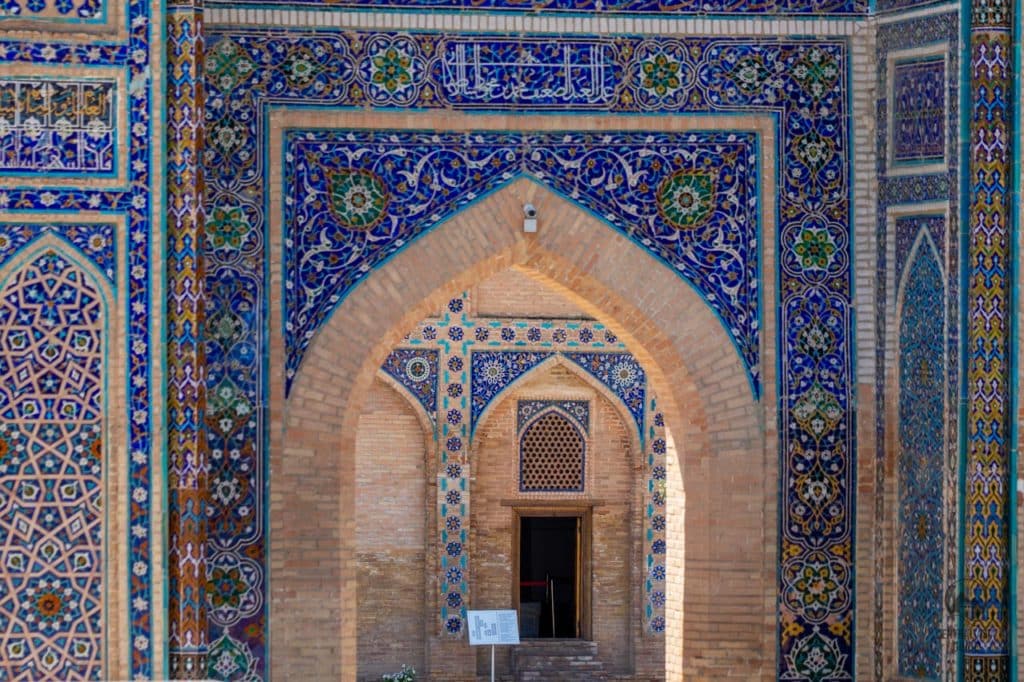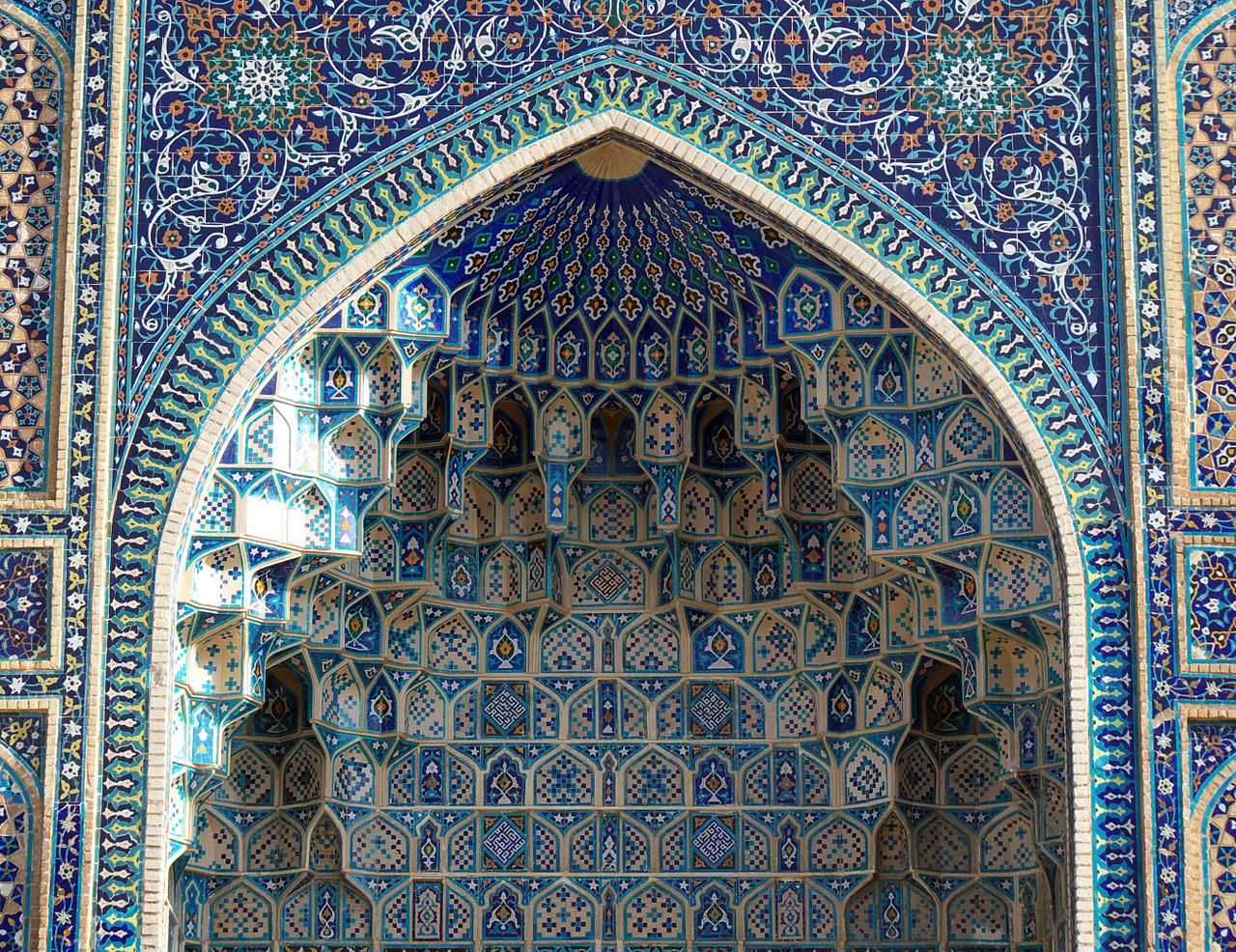This is Central Asia’s cradle of culture for more than 2 millennia, the home of an arsenal of architecture and ancient cities, all deeply infused with the bloody, fascinating history of the Silk Road. In terms of sites alone, Uzbekistan is Central Asia’s biggest draw.
Samarkand, Bukhara and Khiva impress visitors with fabulous mosques, madrassas and mausoleums. Other sites include the fast-disappearing Aral Sea, the fortresses of remote Karakalpakstan, and the boom town capital of Tashkent.
Despite being a harshly governed police state, Uzbeks are extremely friendly and hospitality is an essential element of daily life. Karimov died in September 2016 – the obituary on TV mentioned the repressive police state, forced labour in the cotton fields and the massacre in 2005. The West was criticized for being shamefully neglectful in not criticizing Karimov and his regime.
SAMARKAND (pop 597,000, elev 710m)
Uzbekistan’s most glorious city and one of the most evocative Silk Road places, the sublime monuments to Timur are surrounded by a sprawling, modern, Soviet-built city.
History. Founded in the 5th century BC, it was the cosmopolitan, walled capital of the Soglian Empire when taken in 329 BC by Alexander the Great. A key Silk Road city, it sits on the crossroads leading to China, India and Persia. More populous between the 6th and 13th centuries even than today, it changed hands every few centuries – Western Turks, Arabs, Persian Samanids, Karakhanids, Seljug Turks, Mongolian Karakitay, and Khoremshah – before being obliterated by Chinggis Khan in 1220. In 1370, Timur made it his capital and over the next 35 years, forged a new, almost mythical city – Central Asia’s economic and cultural epicentre. His grandson, Ulugbek, ruled until 1449 and made it an intellectual center.
When the Uzbek Shaybanids moved their capital to Bukhara in the 16th century, Samarkand declined, and after a series of earthquakes in the 18th century, it was virtually uninhabited. It was only truly resuscitated by the Russians who took control in 1868 and linked it to the Trans-Caspian railway in 1888.
The tile work on all the buildings in Samarkand is nothing short of marvellous.
Gur-E-Amir Mausoleum. This is the burial site of Timur, his two sons (Shah Rukh, the father of Ulugbek and Miran Shah), his two grandsons (including Ulugbek), Sheikh Seyid Umar (Timur’s most revered teacher). Timur died of pneumonia in 1405 (when the crypts were opened in 1941, Timur was tall for the era at 1.7m and lame in his right leg and arm from injuries suffered from a fall from a horse when he was 25 – thus Tamerlane or ‘Timur the lame’). The stones marking the graves are just markers – the actual crypts are in a chamber beneath. The building itself is grand with the typical over-the-top tile work.
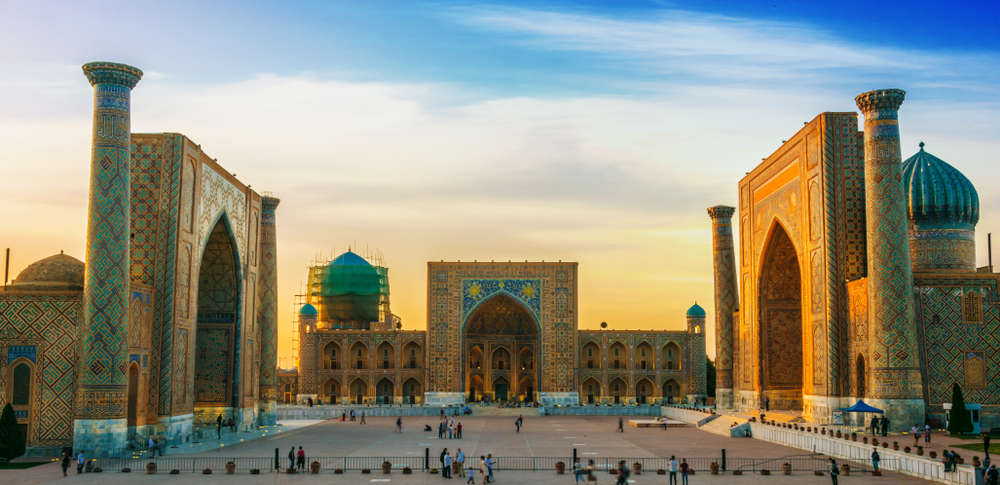
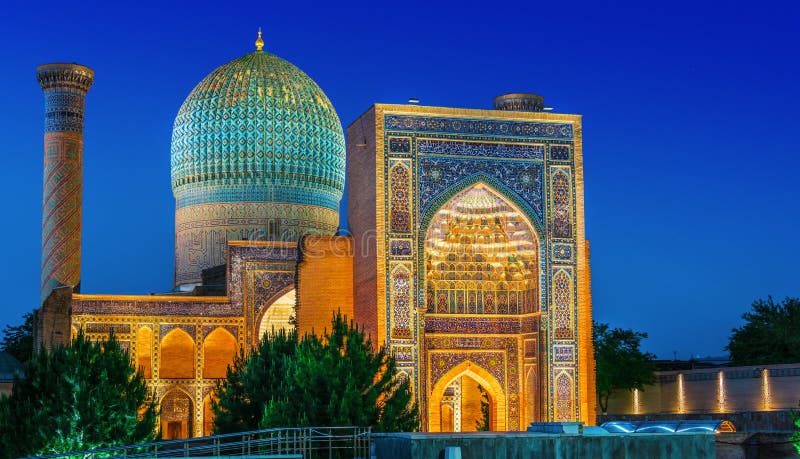
The Registan. This is an ensemble of three amazing madrassas surrounding a square – huge, all an overload of majolica tile, azure mosaics, minarets and domes. It is the centrepiece of the city and arguably the most awesome single sight in Central Asia. They are the world’s oldest preserved madrassas as anything older was destroyed by Chinggis Khan. They were in disrepair at the start of the 20th century and were restored by the Soviets.
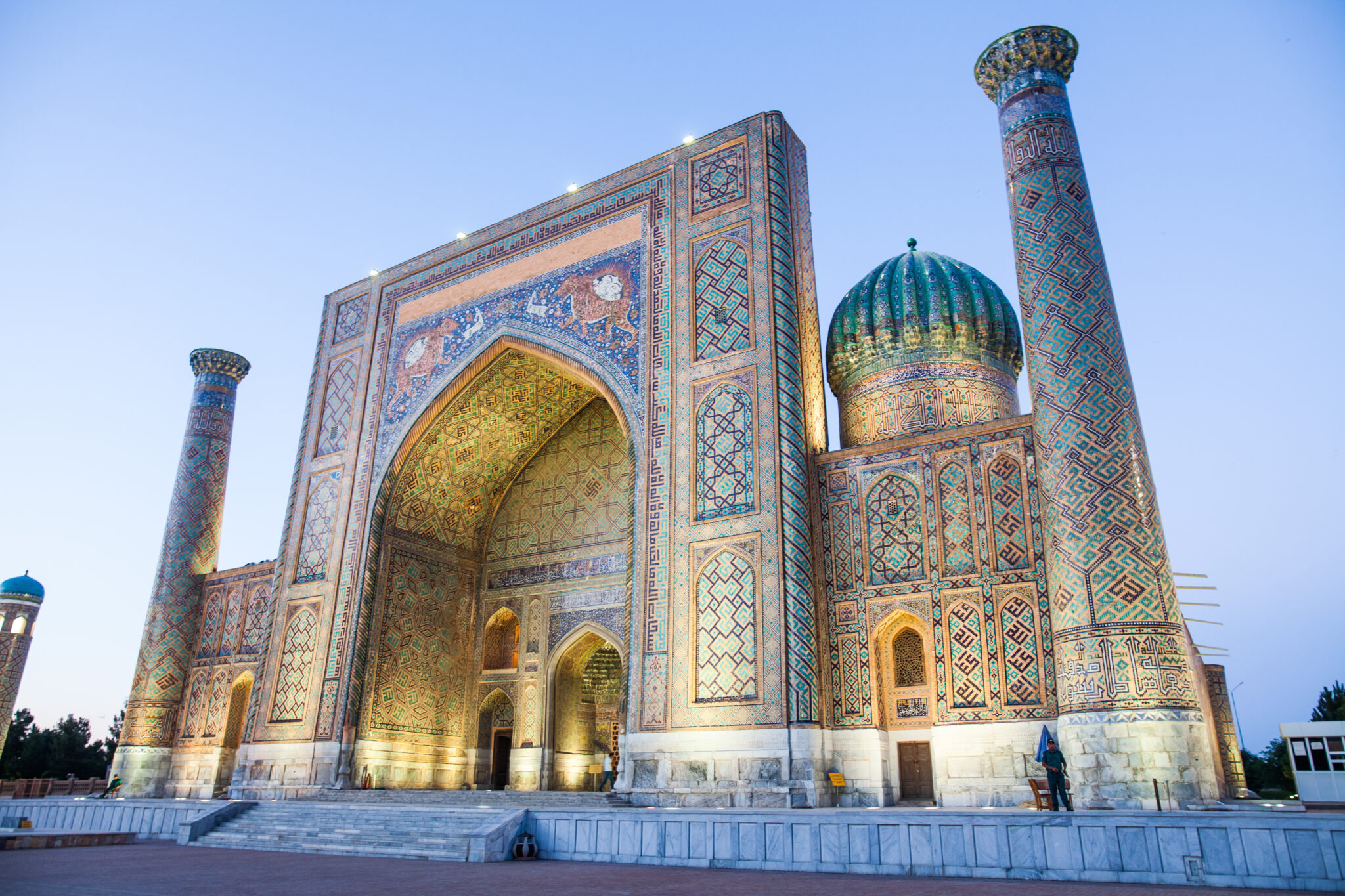
All the dormitories and classrooms now contain art and souvenir shops. The 15,700 som admission is good all day.
1. Ulugbek Madrassa. Finished in 1420, Ulugbek taught mathematics here.
2. Sher Dor (Lion Madrassa). Finished in 1636, it has roaring tigers in tile on the outer side flouting the Islamic prohibition against the depiction of animals.

Tilla-Kari (Gold Covered) Madrassa. Completed in 1660, the highlight is the mosque, intricately decorated with gold. The mosque’s ceiling, oozing gold leaf, is flat but amazingly looks domed from the inside because of its tapered design.

Old Town. Like all Muslim neighbourhoods (think Seville, Cordoba and Grenada in Spain), they are a maze of streets where it is easy to get turned around in. I found the Makdumi Khorezm Mosque, Koroboy Oksokol Mosque, and Mubarak Mosque, but could not locate the 1891 Gumbaz Synagogue after knocking on many doors – nobody had even heard of it (50 Jews in Samarkand).
Bibi-Khanym Mosque. This enormous building was finished just before Timur’s death and must have been the jewel of his empire. Once one of the world’s biggest Mosques, the cupola is 41m high and the entrance pishtak is 38 m.

It pushed contemporary construction techniques to the limit. Bibi-Khanym Timur’s Chinese wife ordered the mosque built as a surprise while he was away. The architect fell madly in love with her, was executed and Timur decreed that women henceforth wear veils to not tempt men. The interior courtyard contains a huge marble Quran stand.
Bibi-Khanym Mausoleum. A 14th-century mausoleum for Timur’s Chinese wife across the street.
Slob Bazaar. A great collection of food and everything else.
Hazrat-Hizr Mosque. The 8th-century mosque was burnt to the ground by Chinggis Khan and not rebuilt until 1854. It is Samarkand’s most beautiful mosque.


Tomb of the Old Testament Prophet Daniel. This is a long walk north of the museum and not worth the effort, no less the ticket price. The sarcophagus is an improbable 18m long – legend has it that Daniel’s body grows by half an inch a year. His remains which date from at least the 5th century BC, were brought here by Timur from Susa, Iran (which also has a tomb of Daniel).
Jewish Cemetery. Most of the grave markers had lifelike etchings of the person.
SHAH-I-ZINDA. This is a stunning avenue of about 10 mausoleums containing some of the best tile work in the Muslim World. It was ransacked by the Mongols and assumed its current form under Timur and Ulugbek who buried their family and favourites here. At the end of the path between the mausoleums, the complex opens up into Samarkand’s main cemetery, a fascinating place to walk.
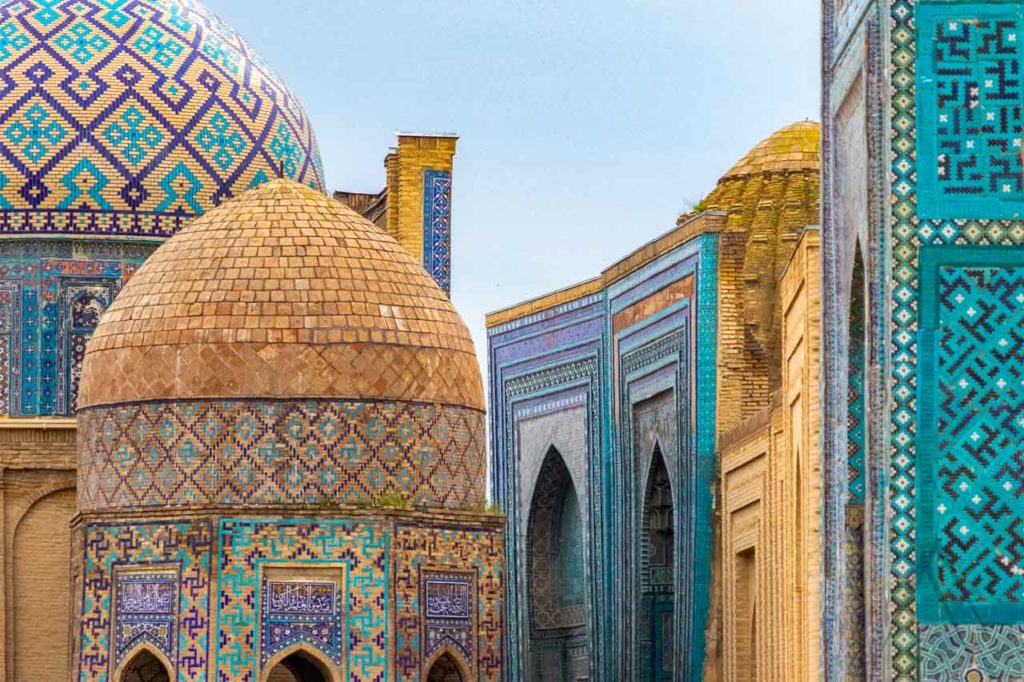
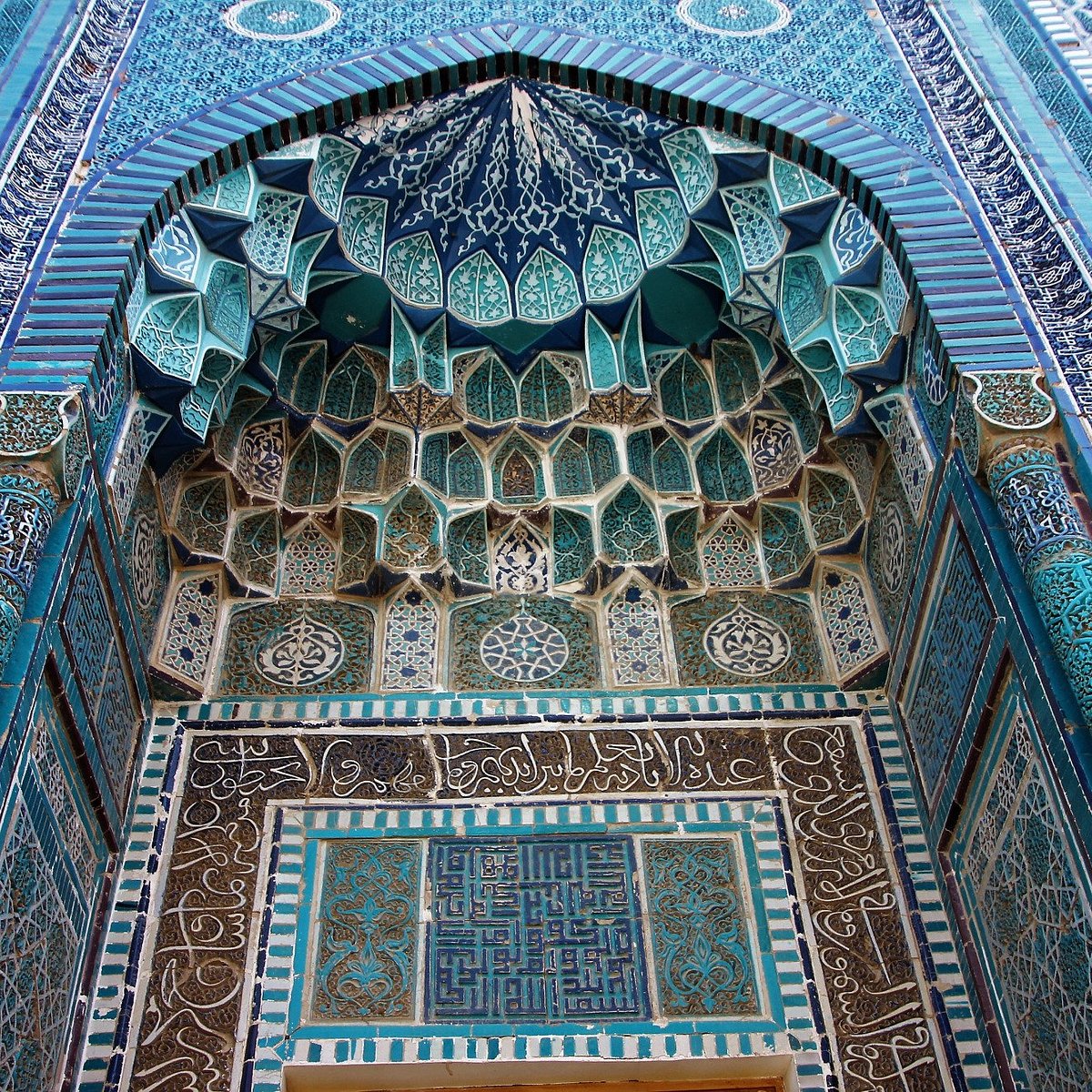
BUKHARA (pop 263,000). Central Asia’s holiest city has 1000-year-old buildings and a thoroughly lived-in old centre that hasn’t changed much in 2 centuries. Most of the centre is an architectural preserve, full of madrassas, minarets, a massive royal fortress and the remnants of a once-vast market complex.
Until a century ago, Bukhara had a network of canals and 200 stone pools, but the water wasn’t changed often and Bukhara was famous for plagues; the average Bukharan died by the age of 32. The Bolsheviks modernized the system and drained the pools.
History. It was the capital of the Samanid empire in the 9th and 10th centuries when it became Central Asia’s religious and cultural heart. It succumbed in 1220 to Chinggis Khan and in 1370 to Timur. In the 16th century, it was the capital of a khanate. It had a vast marketplace with dozens of specialist bazaars and caravanserais, more than 100 madrassas with 10,000 students and more than 300 mosques. The Mangit dynasty ruled from 1753 with a few depraved rulers including Nasrullah Khan, the ‘Butcher’ who ascended the throne by killing all his brothers and 28 relatives.
Char Minar. A gatehouse of a long-gone madrassa, its 4 domed towers make it very photogenic.

Kukeldash Madrassa. When built in 1569, it was Central Asia’s largest madrassa. I loved the Suzannis. Made with cotton or silk, they are true works of art. They are a cottage industry centred in the home and each takes months. Their cost barely reflects the amount of work that has gone into them.
Nadir Divanbegi Madrassa. It has stunning exterior tile work with a pair of peacocks holding lambs and a sun with a human face, in direct contravention of the Islamic prohibition against depicting living creatures.

Hoja Nasruddin. A statue of a semi-mythical ‘wise fool’ in Sufi teaching tales.
Lyabi-Haus. This is a plaza built around a pool in 1620. It is the most peaceful and interesting spot in town shaded by mulberry trees as old as the pool.
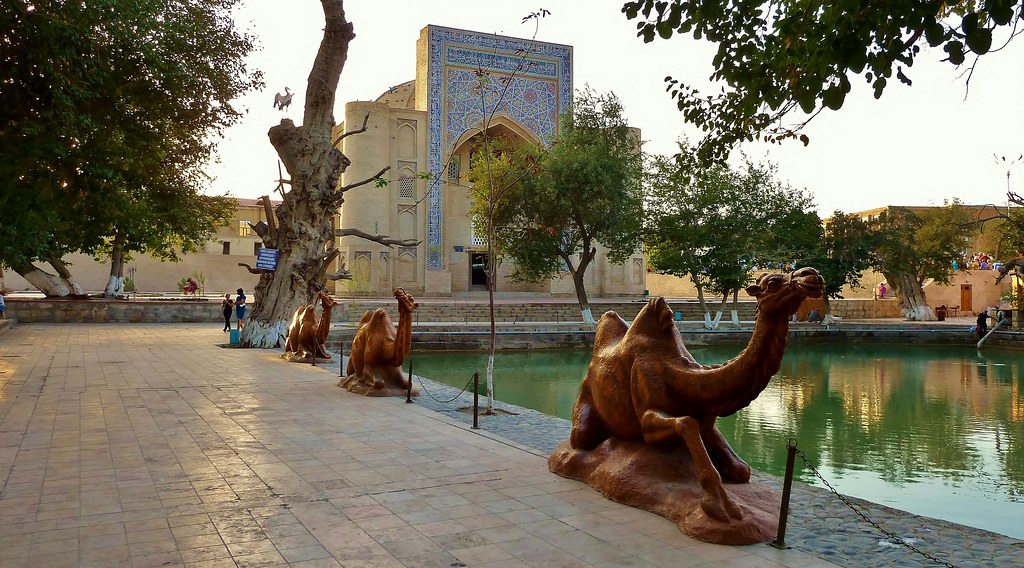
Maghoki-Attar. This is Central Asia’s oldest surviving mosque. It survived the Mongols by being buried in sand as only the top was visible in 1930. The present plaza surrounding it is the 12th-century level of the town.
Covered Bazaars. These 3 domed bazaars are a masterpiece of brickwork.
Kalon Minaret. Built in 1127, at 47 m, it was the tallest structure in Central Asia. Its 10m deep foundations include reeds in an early form of earthquake-proofing. Chinggis Khan was so dumbfounded by it that he ordered it spared. Its 14 ornamental bands, all different, were the first to use glazed blue tiles that were to saturate Central Asia under Timur. Its 105 stairs were closed to tourists.

Kalon Mosque. This 16th-century mosque can hold 10,000. Its courtyard has spectacular tile work. The terracotta work on the outside had swastikas, an ancient symbol in many religions.
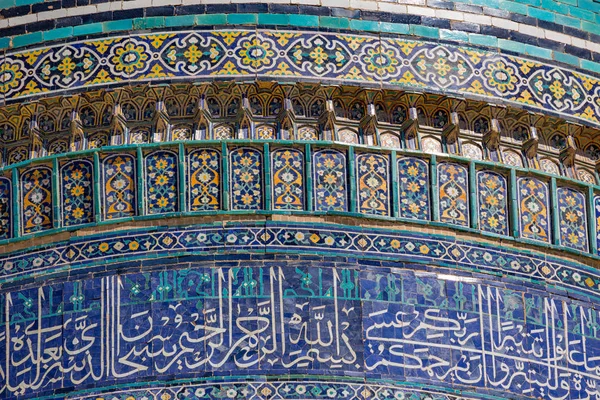
Mir-i-Arab Madrassa. This huge still functioning madrassa has luminous blue domes in sharp contrast to the surrounding brown.
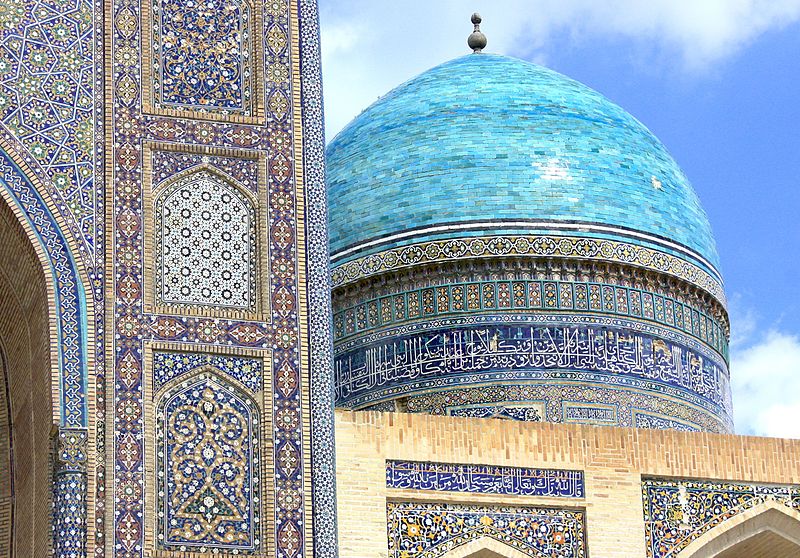
Bahoutdin Architectural Complex. Shaykh Baha-ud-Din or Bohoutdin was the founder of the Naqshbandi order, and was considered the spiritual patron of Bukhara governors; he died in 1389. His necropolis remains the most esteemed in Uzbekistan.
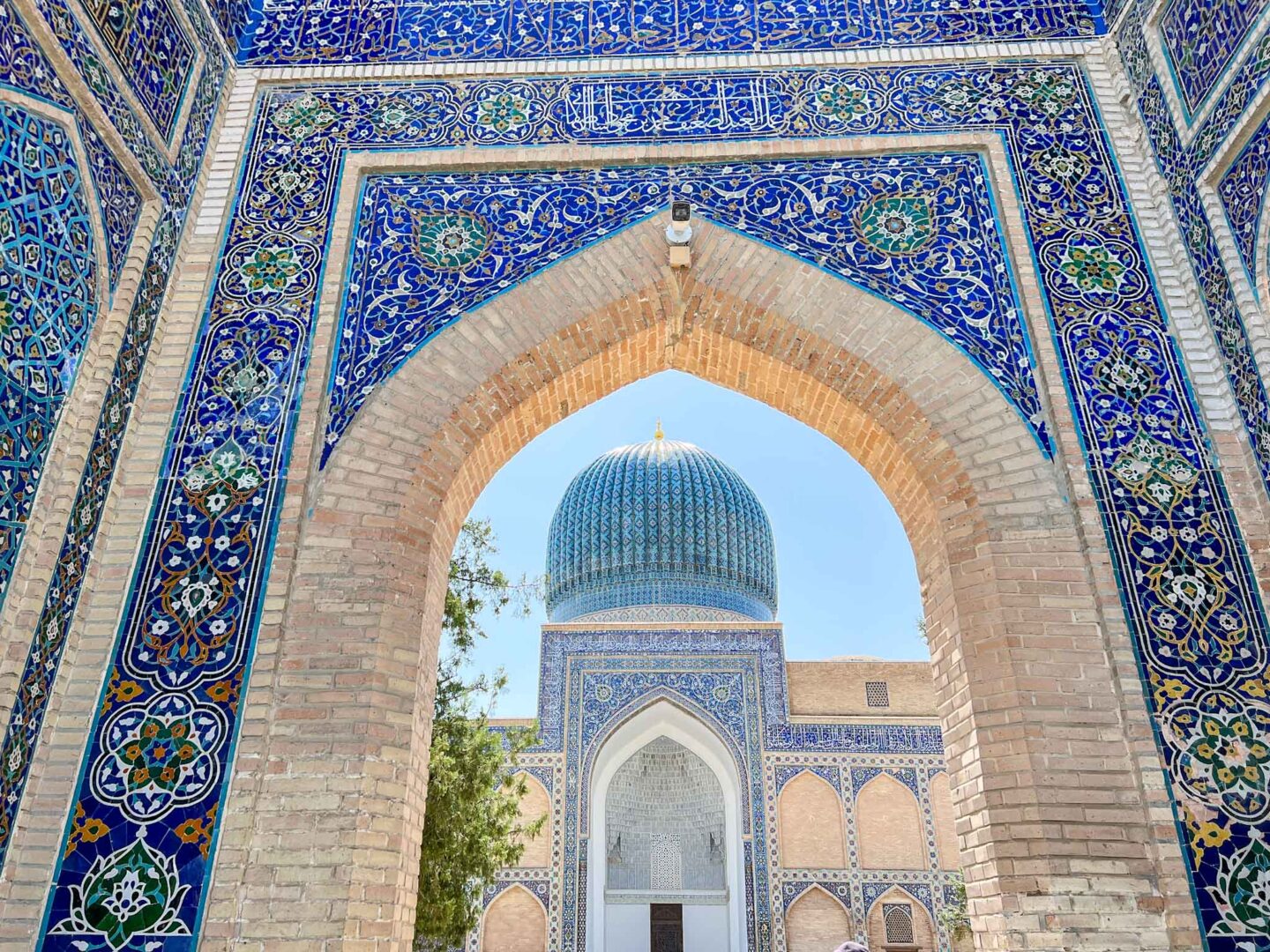
Ismail Samani Mausoleum. Completed in 905, this is the town’s oldest Muslim monument and with 2m thick walls, The outside is intricate baked terracotta brickwork.
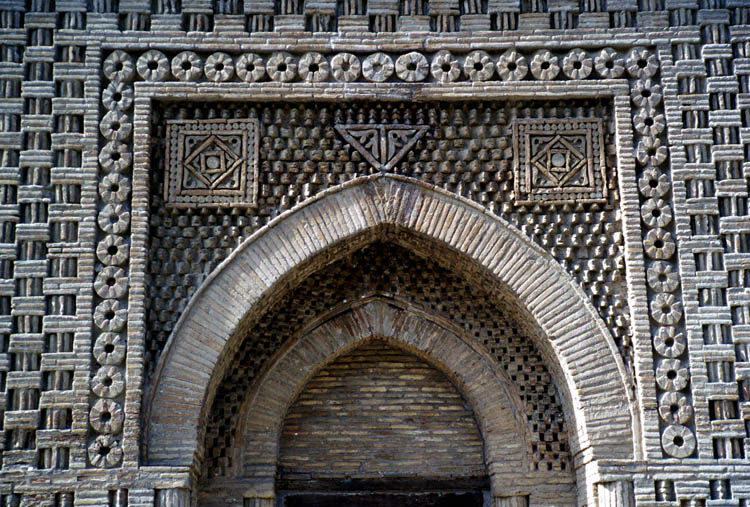
Chashma Auub Mausoeum. Built in the 12 century, it has a peculiar cone-shaped dome and a spring inside with water.

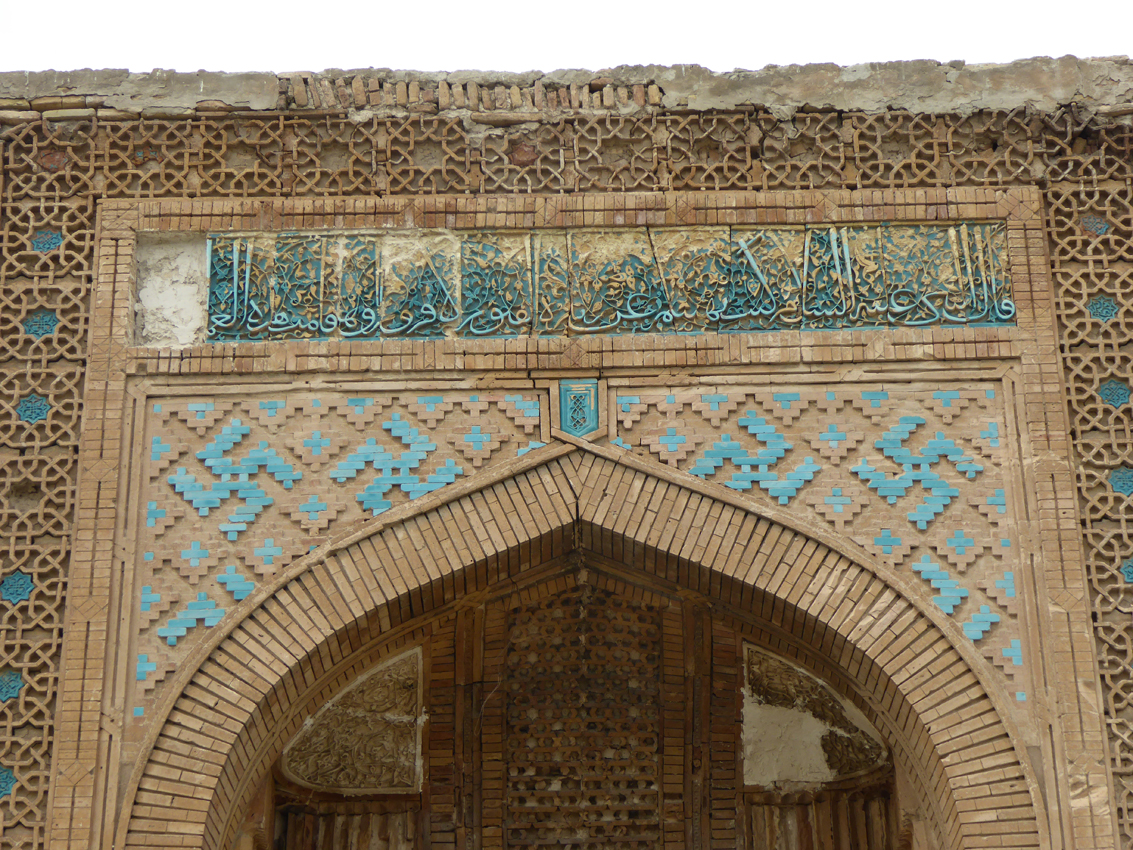
Hoy Zayniddin Mosque. A still-working mosque, it has great original mosaic work.

Ark. Bukhara’s oldest structure was occupied from the 5th century to 1920 when it was bombed by the Red Army. It is a massive fortress with 20m walls, but most is a ruin. The occupied west end contains an active Juma (Friday) mosque and museums.
Ulugbek Madrassa. Built in 1417, it is Central Asia’s oldest Madrassa. Like most things here, it is blue-tiled and unrestored.
Abdul Aziz Khan Madrassa. This 16th-century unrestored gem has as its highlight a prayer room with jaw-dropping ghanch stalactites dripping from the ceiling. This is muqarnas or the vaulted ceilings of honeycombed arches.

KHIVA (pop 50,000)
450kms and 7 hours NW of Bukhara. This Silk Road old town is dubbed the ‘museum city’ enclosed in majestic walls.
History. The Uzbek Shaybands moved in in the 16th century and Khiva was made the capital of Khorezm in 1592. The slave market raided the Karakum Desert or Kazakh tribes of the steppes.
The Russians arrived in 1717 but the Khivans annihilated them. In 1740, Khiva was wrecked by a Persian. By the end of the 18th century, it was rebuilt with the biggest slave market in Central Asia. In 1873, a 13,000-strong Russian army invaded, massacred the townsfolk and took the Khan’s silver throne to Russia. In 1924 it was absorbed into the new Uzbek SSR.
The old town is enclosed in a 2.5 km long wall from the 18th century accessed by 4 gates.
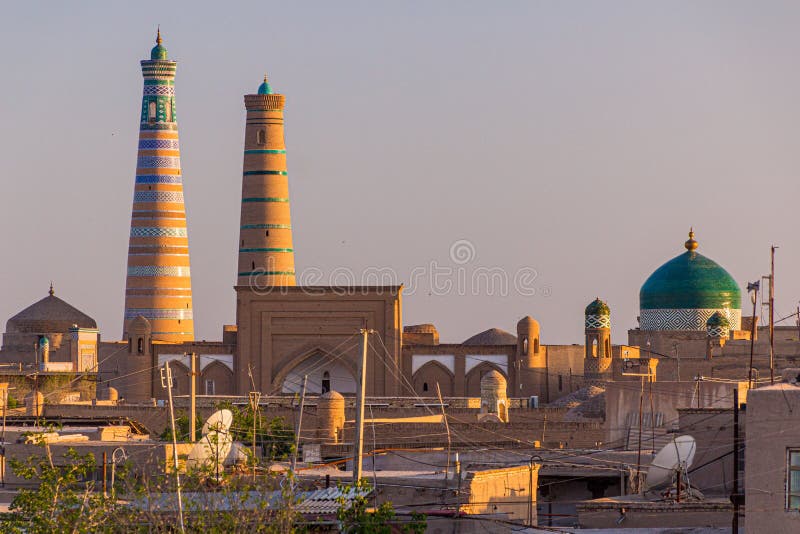

Kuhna Ark. This was the Khiva ruler’s fortress and residence built in the 10th century, it was expanded in the 17th and includes his harem, mint, stables, arsenal, barracks, mosque and jail. The watchtower is part of the original Ark set against the massive west wall and offers great city views.
Mohammed Rakhim Khan Madrassa. Named after the khan who surrendered to the Russians, it now contains a museum.
Kalta Minor Minaret. Started in 1853 but never finished, this beautifully tiled minaret is still majestic and the iconic building in Khiva.


Sayid Alauddin Mausoleum. Dates to 1310 when Khiva was under the Golden Horde of the Mongol empire.
Juma Mosque. It has 218 wooden columns supporting the roof with 7 from the original 10th century mosque.

Tosh-hovlu Palace. The interior has ceramic tiles, carved stone and wood and 150 rooms off 9 courtyards.
Islom Hoja Madrassa and Minaret. Built in 1910, the minaret is Uzbekistan’s highest
at 57 metres.
 /
/
Pahiavon Mahumud Mausoleum. Khiva’s patron saint, poet, philosopher and legendary wrestler, the 1326 tomb has a turquoise dome and lovely tiling on the sarcophagus.
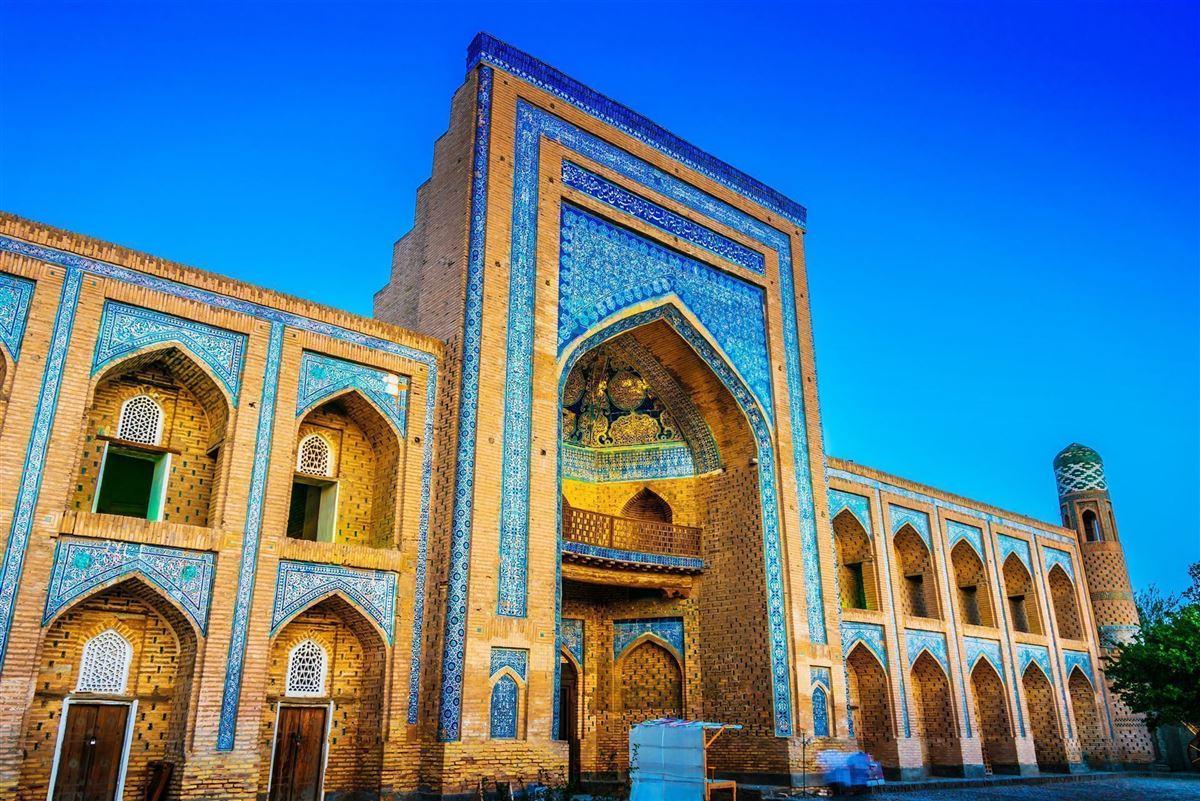

Cross the flat, bleak Kyzylkum Desert full of sand and sage to Urgench (pop 140,000). When the Amu-Darya River changed course in the 16th century, the people of Konye-Urghench 150 miles downriver in Turkmenistan, were left without water and started a new town here. It’s mainly a transport hub for Khiva, 35 km southwest.
